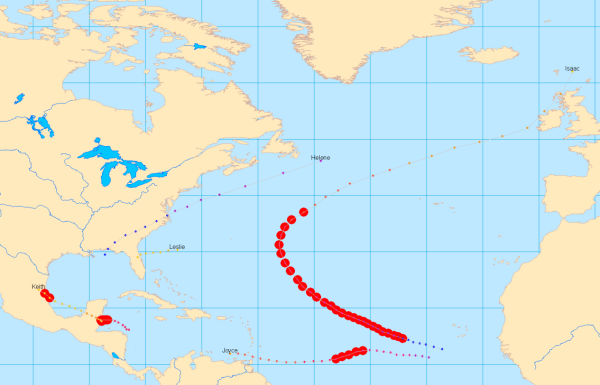ArcGIS Tracking Analyst extension provides a specialized mechanism for custom processing of tracking data. The custom processing is encapsulated in elements called actions, which are executed when the predefined conditions of a trigger are met. In Tracking Analyst, actions can be applied to tracking layers in a map document or they can be applied to real-time tracking services. If you are working with Esri Tracking Server, then actions can also be applied to tracking data at the server level.
Layer actions
Layer actions operate on features contained in a tracking layer. Therefore, they can be applied to both real-time and fixed-time tracking layers. Layer actions are saved in a map document and configured through the Actions tab on the Layer Properties dialog box. If you save a tracking layer as a layer file in ArcMap or ArcGlobe, its action settings are saved along with the layer.
Unlike service actions, layer actions exist entirely in the client application, such as ArcMap. Therefore, these actions are typically related to data visualization for analysis. For example, you can highlight features on the map that meet a certain trigger condition.

Service actions
Service actions operate on data messages as they are streaming into the client application, such as ArcMap, to become tracking features. When you are working with real-time data in ArcGIS Tracking Analyst, features in a real-time tracking layer are being created from the data messages streaming in from a tracking service. Therefore, service actions have the capability of modifying or deleting data contained in tracking data messages before they become features.
Service actions are defined for a tracking service, not a layer. Therefore, they can't be configured through the Layer Properties dialog box. Instead, they must be configured by accessing the Tracking Service Properties dialog box in ArcCatalog or the Catalog window in ArcMap.
Triggers
Attribute triggers are used when you want an action to execute based on the values in certain data fields for an event. For example, if your tracking data contains a field for vehicle ID, you can trigger a highlight action only when the vehicle ID is equal to 2. This results in events for that vehicle being highlighted on the map.
Learn more about attribute triggers.
Location triggers are used to execute actions when certain spatial criteria are met. Location triggers can be used with any layer or service action. For example, you might want to highlight all events that are outside a particular boundary.
Location triggers require a set of polygon features to do a spatial comparison with. For layer actions, you must select a polygon layer. For service actions, you must select a polygon feature class. You can use location triggers independently to execute an action, or you can use them together with an attribute trigger.
Defining multiple actions
Multiple actions can be defined for tracking layers and services. If you have more than one action defined, the ordering of your actions can become important. For example, filtering your data and then applying a highlight to the filtered data will likely give you a different result than applying the filter before the highlight. The order in which actions are evaluated can be configured on the Actions tab in the service or layer properties.